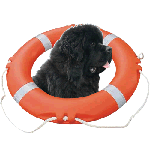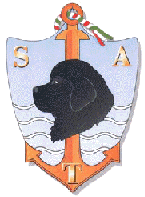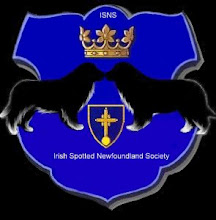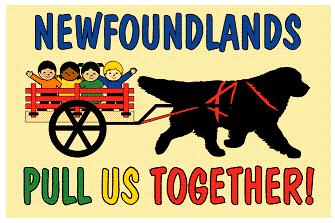Sunday, October 23, 2022
I Am Your Dog
"I am your dog, and I have a little something I would like to whisper in your ear.
I know that you humans lead busy lives. Some have to work. Some have children to raise. It always seems like you are running here and there, often much too fast, often never noticing the truly grand things in life.
Look down at me now, while you sit there at your computer. See, the way my dark brown eyes look at yours. They are slightly cloudy now. That comes with age. The gray hairs are beginning to ring my soft muzzle.
You smile at me; I see love in your eyes. What do you see in mine? Do you see a spirit? A soul inside, who loves you as no other could in the world? A spirit that would forgive all trespasses of prior wrongdoing for just a simple moment of your time?
That is all I ask: to slow down, if even for a few minutes to be with me.
So many times, you have been saddened by the words you read on that screen, of other of my kind, passing. Sometimes we die young and oh so quickly, sometimes so suddenly it wrenches your heart out of your throat. Sometimes, we age so slowly before your eyes that you may not even seem to know until the very end, when we look at you with grizzled muzzles and cataract clouded eyes. Still the love is always there, even when we must take that long sleep, to run free in a distant land.
I may not be here next week. Someday you will shed the water from your eyes, that humans have when deep grief fills their souls, and you will be angry at yourself that you did not have just 'One more day' with me. Because I love you so, your sorrow touches my spirit and grieves me. We have NOW, together.
So come, sit down here next to me on the floor, and look deep into my eyes. What do you see? If you look hard and deep enough we will talk, you and I, heart to heart. Come to me not as 'alpha' or as 'trainer' or even 'Mom or Dad, come to me as a living soul and stroke my fur and let us look deep into another's eyes, and talk.
I may tell you something about the fun of chasing a tennis ball, or I may tell you something profound about myself or even life in general. You decided to have me in your life because you wanted a soul to share such things with - someone very different from you, and here I am.
I am a dog, but I am alive. I feel emotion, I feel physical senses, and I can revel in the differences of our spirits and souls. I do not think of you as a "Dog on two feet"- I know what you are. You are human, in all of your quirkiness, and I love you still.
Now, come sit with me on the floor. Enter my world, and let time slow down if only for 15 minutes. Look deep into my eyes, and whisper to my ears. Speak with your heart, with your joy and I will know your true self.
We may not have tomorrow, and life is oh so very short."
Sunday, October 16, 2022
Sunday, October 9, 2022
This Newfoundland Is Training To Be A Lifeguard
(akc.com - August 2022)
If you find yourself at Maine’s Scarborough Beach State Park this summer, you might be greeted by a very special trainee lifeguard: a 16-month-old Newfoundland named Beacon. A group of committed Newfoundland enthusiasts, including Beacon’s owner Greg Wilfert, is working to train more Newfoundlands as canine lifeguards.
Natural Ability:
Wilfert is a lifeguard at Scarborough Beach State Park, and Beacon accompanies him to work. Dog lifeguard training began early for this puppy. Wilfert explained that when Beacon was 12 weeks old, she started greeting the public at the park. At five months old, she began her formal training. He sees Beacon as “another important tool to keep the public safe.” Beacon trains daily on land and in the water from June to August.
Much of her training has been with the American Academy of Canine Water Rescue. AACWR’s president and founder, Maria E. Gray, Ph.D., notes that “Beacon is an incredible young Newfoundland dog.” A fast learner, Beacon has shown a natural aptitude and interest in being a water rescue dog.
“Beacon has amazing drive and rapidly took to the basic water work exercises. She was with us for 45 days and then returned to work with Greg on his beach,” Gray explains. Then for the next stage of her training, “three head instructors from the Academy traveled to the beach in Maine where Greg and Beacon work to train with several other water rescue dogs,” Gray explains. Throughout, Beacon’s drive for the work has increased.
A Lifesaving Legacy:
Using Newfoundlands as part of a lifeguard team helps preserve these giant pups’ working nature. Historically, Newfoundlands were Canadian fishermen’s working dogs. Newfoundlands were bred to pull fishing nets and boats, and to be strong enough to save adults from drowning. Their natural swimming ability makes this breed a natural choice for the AACWR.
Gray says, “They are ideal for water rescue work due to their triple coat, with a layer like goose down close to their skin and an outer coarser layer of fur. This helps their skin to stay relatively dry and allows them to swim in very cold water if needed. They have webs between their toes, which helps their powerful paws to swim and they don’t do a ‘doggie-paddle’—they reach out with their front paws. Their large, droopy jowls allow them to hold a rope or a line in their mouth, while swimming, as it permits the water to pour out the sides of their mouths.”
In addition, Newfoundlands “have tremendous endurance and can swim for miles; they can pull thousands of pounds in the water,” explains Gray. Other breeds like Labrador Retrievers work as water rescue dogs, and Gray notes that any dog of the right size with a strong bond to their handler and a drive to work can be trained to do water rescue.
Water rescue dogs primarily serve “as a force-multiplier, allowing the human first responder to conserve their energy for when it is truly needed,” she adds. When working Newfoundlands are deployed alongside a lifeguard, “the dog can pull up to 50 times its body weight in the water, so can be utilized to tow a small boat with passengers if needed.”
Canine safety is a priority. “The dogs utilize a specially designed harness which serves as a PFD (personal flotation device) for the dog and allows the lifeguard to ‘ride’ the dog, holding onto handles, which permit a trained dog to be steered,” Gray says.
Training Water Rescue Dogs:
A lot of training goes into preparing a dog for professional water rescue work. Gray notes that candidates “must have a deep bond with his/her primary handler, basic obedience skills, and a gentle disposition. The dog must exhibit drive and should have joy in working. We seek out dogs that display overt friendliness to humans, even strangers. Dogs that are highly motivated through positive training techniques to learn new skills.”
Gray advises that it usually takes anywhere from one to three years before dogs can conduct a rescue with a first responder. Water rescue dogs are continuously training through their working careers. The Academy utilizes what Gray describes as an “instructor dog” to teach student canines more efficiently and effectively. She adds, “There is the human trainer, but we demonstrate to the new dog with one of our top instructor dogs. The dogs can learn from other dogs.”
Helicopter Rescues:
The AACWR completed its first helicopter deployment training exercises in July 2022. In this mock rescue, highly-trained Newfoundlands jumped out of helicopters to reach people simulating being in distress. Gray says that the AACWR enlisted “our top two instructor dogs” who were capable of doing land to water rescues, which start from the shore with a lifeguard to a person/s in distress, and water-water rescues, which involve “deploying from various types of water crafts.” In advance of this training exercise, the AACWR had trained the pups to fly on helicopters. This included boarding and unloading while the helicopter was on.
The AACWR puts significant time and effort into training the dogs to be comfortable around loud sounds and distractions prior to their first flights. The organization conducts these mock rescues in the same style as the Italian School of Water Rescue Dogs, which utilizes Newfoundland helicopter deployments from helicopters as part of working water rescue efforts.
Beacon Loves Her Public:
When she’s not working, Beacon is a beloved pet and friend to Wilfert. During the summer, the two live across from the beach, and in the winter, they call Carrabassett Valley home.
Wilfert explained that Beacon is “a people’s pup.” Extremely outgoing and friendly, Beacon also takes her water rescue work very seriously. If you find yourself at Scarborough State Park, Wilfert encourages you to approach him and ask to meet Beacon. “We encourage meeting and petting; Beacon loves her public!” he says.
Saturday, October 1, 2022
The Story of Sergeant Gander - The Brave Newfoundland Who Sacrificed Himself in Battle to Save His Battalion
(Worldnationnews.com)
"Thousands of people have gone down in history in war conflicts to sacrifice themselves to save families, entire communities, battalions and even nations. However, there are other lesser-known heroes who have given their lives in heroic acts worthy of recognition.
Pal, as he was named during the first months of his life, was the pet of a family who lived in the small Canadian town of Gander. Like a good Newfoundland, the dog soon began to grow and became a specimen weighing around 70 kilograms.
It was October 1941, and second World War was in development. The Unit of the Royal Rifles and Winnipeg Ranchers had previously been sent to war together to defend the British colony of Hong Kong from Japanese threats.
Prior to service in Hong Kong, the Royal Rifles and Sergeant Gander had served in Newfoundland and St Johns, while the Grenadiers served in Jamaica, although both squadrons had minimal training, this was not relevant at the time. It was thought that Canadians would only have garrison duty, not combat duty.
However, peace on the island was short-lived and in December the Japanese landing resulted in intense bombings against Hawaii (Pearl Harbour), as well as United States naval bases in northern Malaysia, the Philippines, Guam, Wake Island, and Hong Kong, Where were the Canadians?
As stated in the Canadian Veterans Archive, the Canadian Forces commanded 1,975 soldiers commanded by Brigadier JK Lawson, in addition to Gander and another body of nurses.
On December 19, 1941, the 1st Battalion of the Royal Rifles was cut down and the Canadians were barely able to respond to the offensive. In one such attack, a grenade fell along with the squad and bravely Gander took the explosive and quickly drove away, exploded and died instantly, but saved the soldiers.
Although the fighting ended with over 1,050 dead and wounded, the remaining survivors, including some prisoners of war, were able to return home, although this confrontation was one of the bloodiest episodes involving Canadians in World War II.
Only a few weeks passed after the fateful day for Gander to become a legend. He was posthumously awarded the Dickin Medal on 27 October 2000. The first to be honored in 51 years, and after the Canadian War Museum, the Hong Kong Veterans Association and the Hong Kong Memorial Association advocated an award for bravery. The Dickin Medal is a equivalent to the Victoria Cross. Animals were given the award for their actions in armed conflicts and to date only 61 animals have been received the award.
His medal read: “For saving the lives of Canadian infantrymen during the Battle of Lai Mun on Hong Kong Island in December 1941. Twice Gander attacks blocked enemy advances and wounded protected groups of soldiers. In a final act of bravery, the war dog was killed while carrying a hand grenade. Without Gander’s intervention, many more lives would have been lost in the attack."
Three decades before he was awarded the Dickin Medal, and at the insistence of the surviving military, Gander was included in the Hong Kong Veterans Memorial located in Ottawa, Canada, where the names of 1,975 male and two female nurses who were part of the battalion are pending.
Finally, on 23 July 2015, a statute in honor of Gander was erected at Newfoundland Memorial Park.
Philip Dodridge, one of the former members of the Royal Rifles who was also a prisoner of the Japanese for three years, told the network, CBC: “It is very emotional, even talking about it, it is very close to my heart. He was loved by all of us, he followed us to Hong Kong and was killed in action.”
Gander’s story was also included in David Long’s book The Animals VC, For Gallantry or Devotion, which discusses the animals that have received the Dickin Medal."
Subscribe to:
Posts (Atom)










































